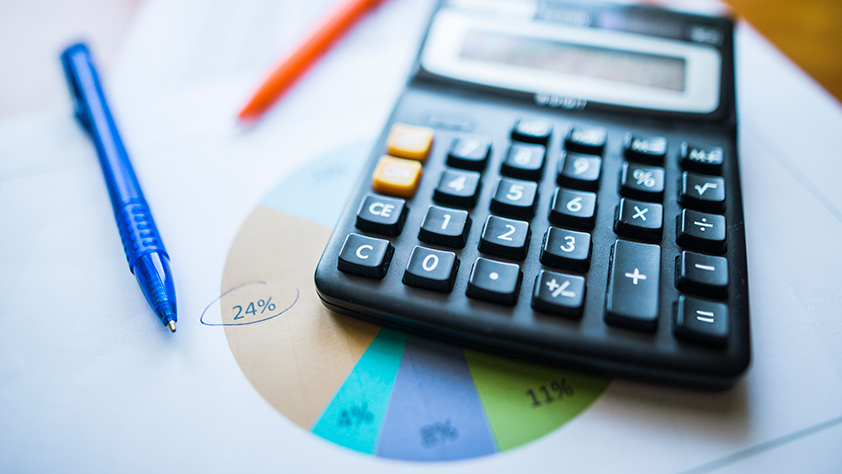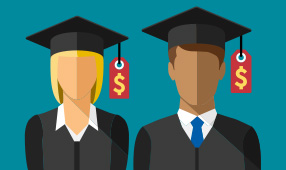Key takeaways
- Know where your money is going so you can feel in control and be a smarter spender.
- You can budget manually, use a spreadsheet, a mobile app or PC software depending on needs.
- Budgeting helps to build wealth over time by freeing up extra money for savings.
Do you know where your money is going? Chances are, the answer is, “Well, not always.”
You’re not alone: Very few people actually track their expenses, says registered investment adviser Pam Dumonceau, president and CEO of Colorado-based Consistent Values. Unfortunately, that’s like driving a car without a dashboard, explains Matt Bell, an associate editor at SoundMindInvesting.com. Not knowing exactly where your money goes can leave you with a “subtle, even unrecognized sense of anxiety about your money,” Bell says. “You need that feedback in order to use money effectively.”
You can get that feedback by turning yourself into a budgeting believer.
Get in a budgeting mindset
Some people equate “going on a budget” with “going on a diet.” It’s a big reason why so many resist the idea. But with a budget, you’re not necessarily cutting back or restricting yourself. It’s more about fully understanding how you’re spending your money so you can make smart choices.
Budgeting can be freeing because it lets you be in control, says Bell, who has written several books, including Money, Purpose, Joy. You’ll probably also find that you’re spending less because your budget functions as “a built-in form of accountability,” he says, and you’ll think twice before you buy something you may not need.
Expense tracking is the foundation of budgeting. “I think it’s the most essential tool for wise money management,” Bell says. Knowledge really is power, and you can use that power to “make conscious, proactive decisions that let you do what you really want to do with your money,” he says.
Use the budgeting techniques and tools that work for you
The budgeting and expense tracking resources available today give you lots of options. There’s no right or wrong way to do it, but the best technique is, “…the one that you’ll actually use,” says Bell.
Here are four budgeting methods with suggested tools and resources that will help you find the solutions that work best for you.
1. Create spending category envelopes
If you use cash most of the time, don’t have a large savings reserve, and aren’t interested in learning personal finance software programs, try envelope budgeting. Label several envelopes with categories reflecting your monthly spending, such as:
- Food
- Housing
- Vehicles
- Insurance
- Miscellaneous
Decide how much you’ll spend monthly in each category, and on payday, deposit that amount of cash into each corresponding envelope. Take money out when you need to buy something in that category. When an envelope is empty, you can’t spend any more in that category until you replenish the envelope on your next payday.
At the end of the month, leave any remaining cash in the envelopes to help cover unexpected expenses.
2. Fill out a spreadsheet
Spreadsheet software, like Microsoft Excel or Google Sheets, is well-suited to budgeting and expense tracking because the software can perform automatic calculations. When you enter amounts in each category, the program automatically adds it to the total—no math skills required.
To research similar templates, Google “Budgeting worksheet.” You’ll find many different free online worksheets, like this one from Budget Worksheets.org.
If you’re an old-school pen and paper person, download the Budget In Your Pocket template from American Consumer Credit Counseling. It folds down to a business-card size that will fit into your wallet so you can make spending entries on the go.
3. Use a mobile personal finance app
There are numerous budgeting and expense tracking apps for both Android and iOS, and many are free. There are even several that are digital versions of the tried and true envelope system. Read capsule reviews of about two dozen apps here.
4. Set up a computer software program for more power
Personal finance software designed to run on your PC or Mac can offer more advanced tracking and analysis capabilities, such as the ability to generate reports and automatic integration with your banking accounts. Quicken, one of the best-known programs, comes in different versions (and price points) depending on the level of features you need.
Many finance software programs go beyond budgeting to include bank and credit card account tracking, loan and investment tracking, and tax planning, among many other features. All the top programs have mobile apps for iOS and Android devices so your data are always with you.
Most PC financial software is now cloud-based, relying on internet connectivity to link multiple accounts and provide automatic feature updates. But some, like Quicken, still offer traditional offline desktop versions for those who prefer to manually manage their financial information from their local hard drive.
Keep in mind that because they are so feature-laden, these programs may have a steeper learning curve.
Check out this list of personal finance software for Windows and Mac.
Budgeting helps to build wealth over time
Tracking your expenses regularly will become a habit, and soon you’ll find that you can allocate money for an emergency fund and contribute more to your retirement accounts.
“Budgeting, or harnessing your cash flow, is the foundation to building wealth over time,” Dumonceau says. Her millionaire clients became millionaires by saving just a little money each week over the course of their careers, she says. The easiest way to save is to have money from your paycheck deposited directly into a savings account.












